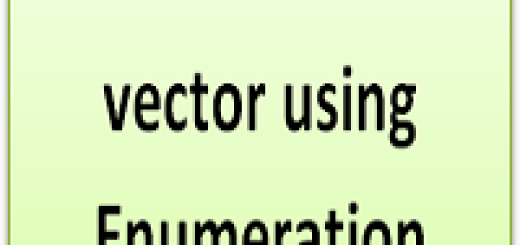Add Element to Vector
In the previous post, we have seen what is Vector in java. In this post, we will see how to add element to vector.
There are 3 ways, we can create vector as given below.
#1 Vector vec = new Vector();
It creates an empty vector with default size of 10. If a 11th element will be added to the vector, it will be re-sized to doubles of its capacity. That means if it has capacity, it will be re-sized to 20 when inserting the 11th element.
#2 Vector object= new Vector(int initialCapacity)
e.g. Vector vec = new Vector(5)
It will create a vector of size of 5 elements.
#3 Vector vec = new vector(int initialcapacity, int capacityIncrement)
e.g. Vector vec = new Vector(3,5)
It has 2 arguments. First intialcapacity is 3 which means it creates a vector of size 3. Second argument capacityIncrement is 5 which means if vector is full then at insertion of next element it will be incremented with the given capacity i.e. 5. So it will become 8 (3+5).
The method to add element is ‘addElement()’.
Example:
import java.util.Vector;
public class VectorExmple {
public static void main(String[] args) {
Vector<String> car = new Vector<String>(3); //it has capacity of 3
car.addElement("BMW");
car.addElement("Honda");
car.addElement("Audi");
System.out.println("All cars : "+car);
System.out.println("Vector size : "+car.size());
System.out.println("Vector Capacity : "+car.capacity());
//Add 2 more elements and then check its size and capacity
car.addElement("Ferrari");
car.addElement("Bugatti");
System.out.println("Vector size after adding more elements than its size : "+car.size());
System.out.println("Vector Capacity : "+car.capacity());
}
}
Output:
All cars : [BMW, Honda, Audi] Vector size : 3
Vector Capacity : 3
Vector size after adding more elements than its size : 5
Vector Capacity : 6



1 Response
[…] Add an element to Vector […]